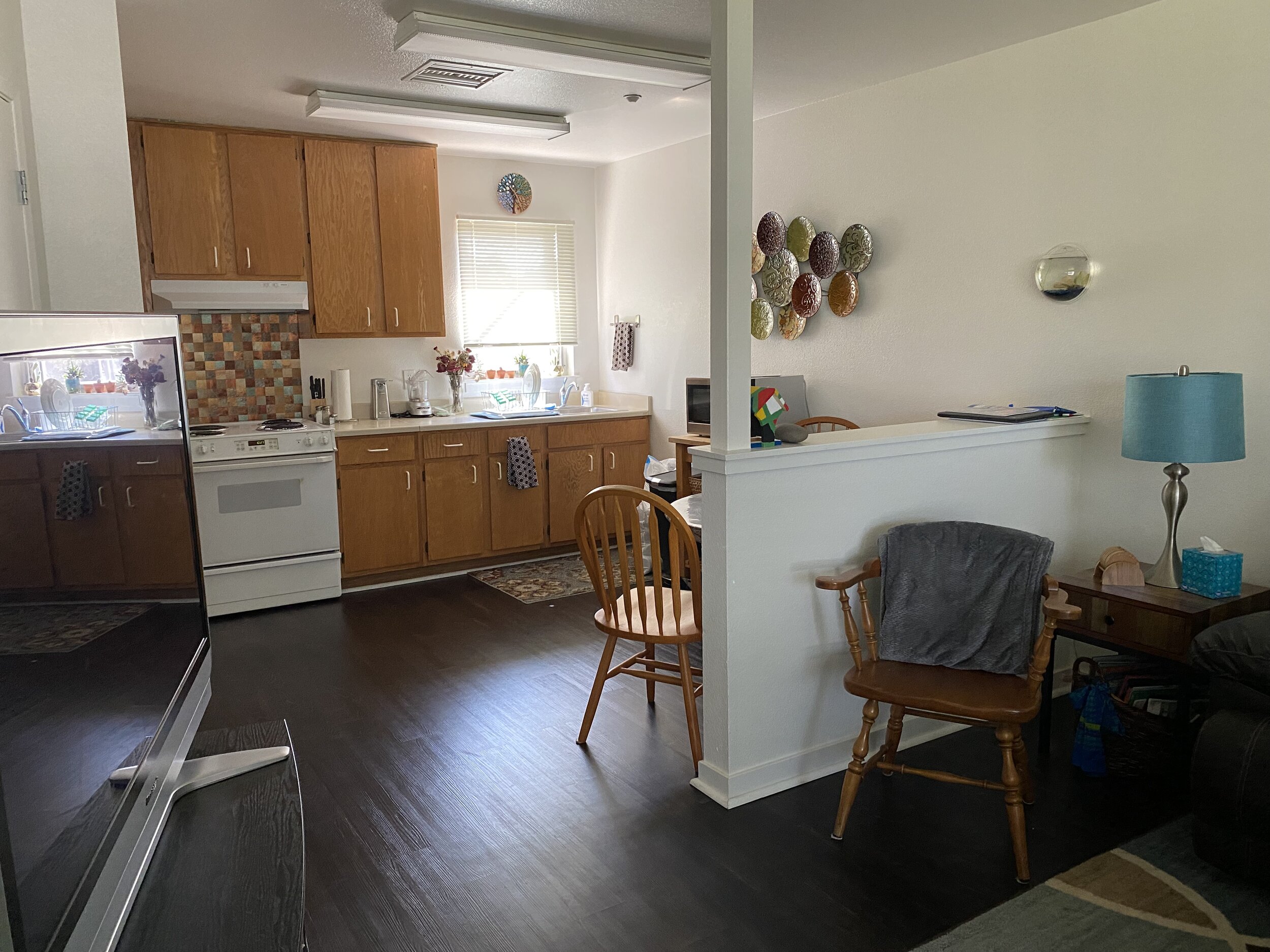A disability housing advocate calls for the dismantling of bureaucratic obstacles preventing the development of autism-friendly affordable housing.
View of some units at Villa Esperanza, Gilroy, California.
By Jill Escher
One of the most ludicrous and damaging battles waged by so-called “disability rights” activists is their deranged crusade to de-fund congregate-style residential facilities, which they routinely liken to “institutions” of old that once housed 1000’s of residents. It is of course nonsense, but this line of absurdist reasoning has already had a damaging chilling effect on needed developments aimed at the intensive needs of the autistic and developmentally disabled. Any development with more than a handful of disabled residents can become the target of immediate witch-hunt-like suspicion, and as a consequence, many projects die before they can get off paper.
This insane self-sabotage came to mind as I recently toured a lovely 20 year-old housing development in Gilroy, California, located some 30 miles south of the Silicon Valley area. Villa Esperanza was built in the late 1990s when it was still totally cool, and indeed noble!, to say, “We are creating housing for the developmentally disabled.” This was before groups like the Autistic Self Advocacy Network and others routinely hurled poisonous accusations at such developments calling them “isolating” and “institutional.”
Interior of a 2-bedroom, 1 bath unit at Villa Esperanza.
The primary goal of Villa Esperanza, created by a nonprofit housing developer, was the provision of affordable housing for adult developmentally disabled individuals and their families. It received a construction loan (Section 811) from HUD and smaller loans as well. Other local nonprofits were involved in the planning, and now the administration. For the past two decades it has provided 21 units of desperately needed housing at affordable rates. The person with DD pays a portion of the rent (perhaps about $300, representing 1/3 of their SSI income), while the balance is paid by the county Housing Authority with HUD funds. Some tenants live independently, some with roommates, some with professional supports chosen by the client. Most tenants access the community on a regular basis and attend supported employment or day programs. The mini-campus also features a community room for social gatherings.
As I toured the grounds I could only think, “Given the skyrocketing rates of autism, why are there not Villa Esperanzas everywhere? Why isn’t this model — a public-private partnership providing affordable, subsidized units to DD adults in a safe, serene setting — a go-to norm for our population?”
A view of Villa Esperanza.
And then the flood of invented obstacles flooded my head: efforts by HUD to limit the number of tenants with DD; vague fears that Medicaid dollars won’t fund supports in a setting with “too many” disabled people; the harassment and delays imposed by so-called advocates; the reticence of private funders to enter this contentious space; and of course, here in the Bay Area, the generally skyrocketing costs for everything related to real estate and development.
Remodeling the community room.
Recently, the Centers for Medicare and Medicaid Services (CMS), which oversees the Medicaid program, wrote a letter clarifying that developments like Villa Esperanza should not fall under suspicion as violating the HCBS (Medicaid Home and Community Based Services) settings rule. CMS clarifies that the settings rule "does not prohibit funding in farmsteads, intentional communities, and campus settings." It also clarifies that the rule does not impose a cap on the number of individuals receiving services in a setting. Importantly, CMS reiterates that "the focus should be on the experience of the individuals in the setting." Please see the letter here, via Together for Choice.
I would like to suggest that Villa Esperanza represents the “three legs of the stool” approach we need to unleash more capacity for autism housing. First, it provides for HUD subsidies for adults who clearly cannot earn a living and should be considered priority cases for vouchers. Without HUD funding our nation’s de facto autism policy is “autism housing for rich people only.” Second, it allows for Medicaid-funded onsite services, pegged to the specific needs of each individual. And third, there is a measure of general oversight (however imperfect) provided by nonprofit operators. To serve severe autism the project would need additional features, including lockable fencing and onsite amenities such as swings and sensory equipment, some sound barriers to protect neighbors from screaming and screeching, as well as a resident handyman to respond to the foreseeable torrent of property destruction.
But the bottom line is this: let’s call B.S. on the labeling of congregate projects as “institutions” and let’s remove all bureaucratic barriers preventing the development of options like Villa Esperanza. After a decade of destructive anti-development activism, let’s screw our heads back on and let 1,000 Villa Esperanzas bloom.
Jill Escher is the President of the National Council on Severe Autism as well as a private provider of low-income housing for adults with developmental disabilities.
Disclaimer: Blogposts on the NCSA blog represent the opinions of the individual authors and not necessarily the views or positions of the NCSA or its board of directors.




